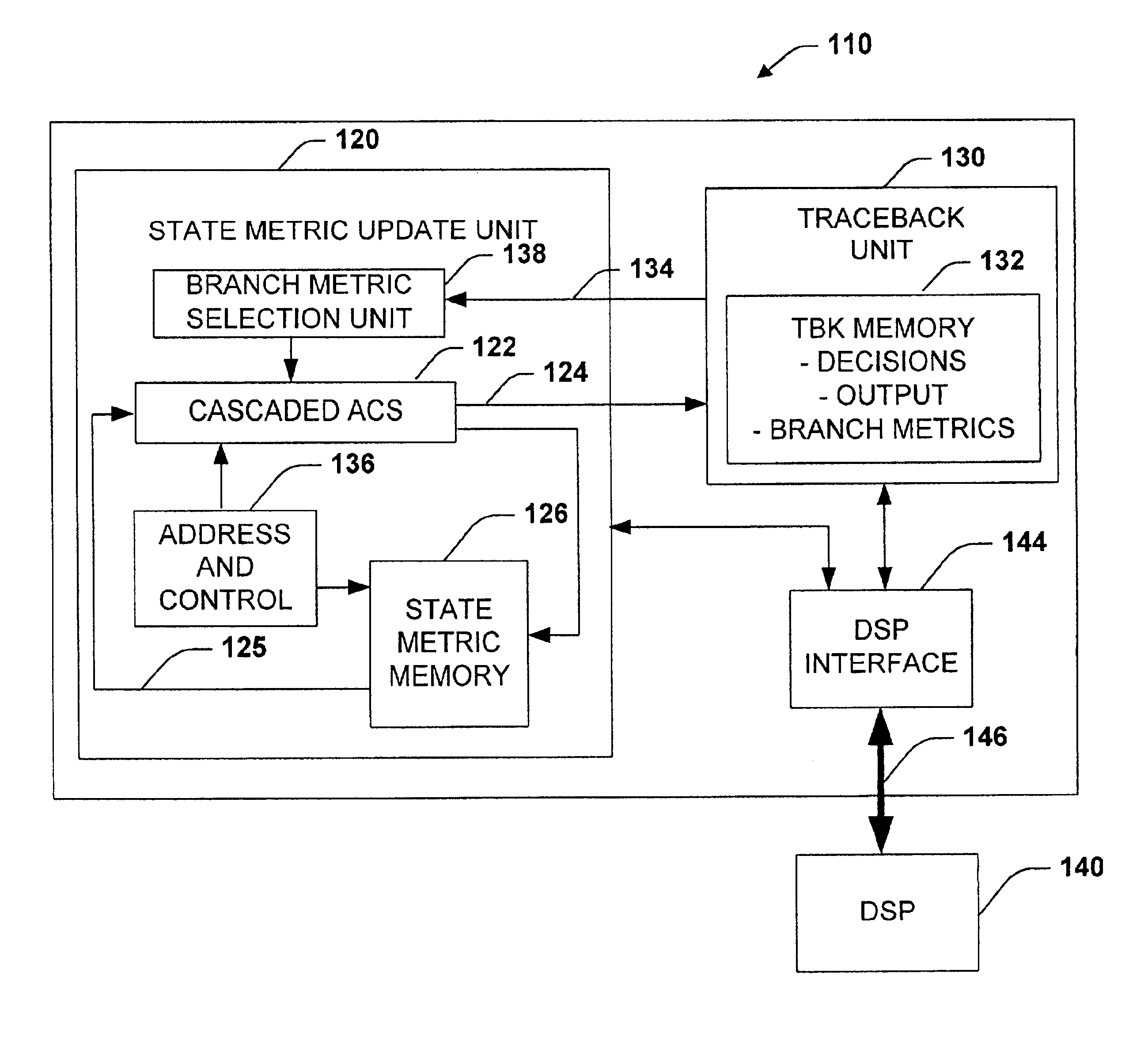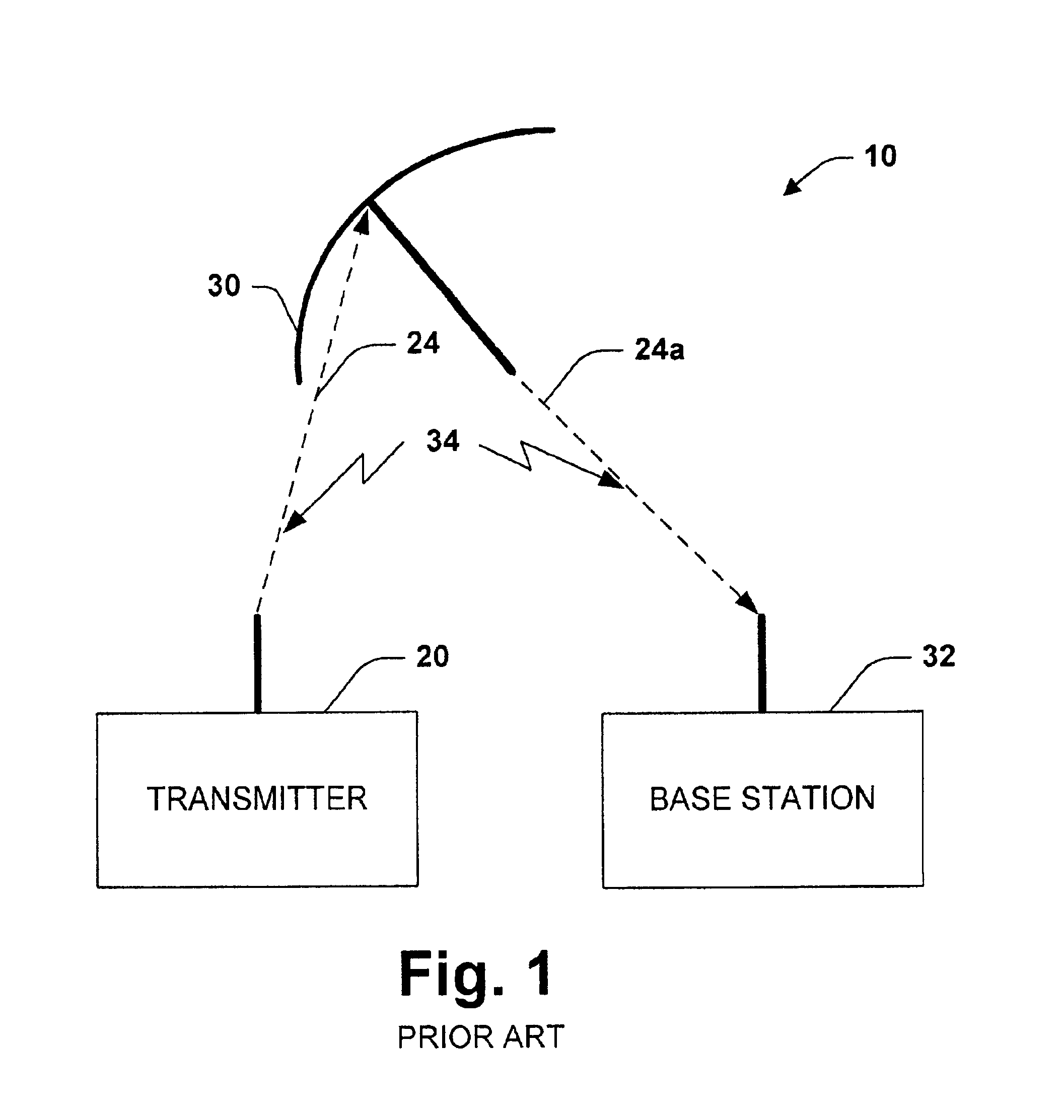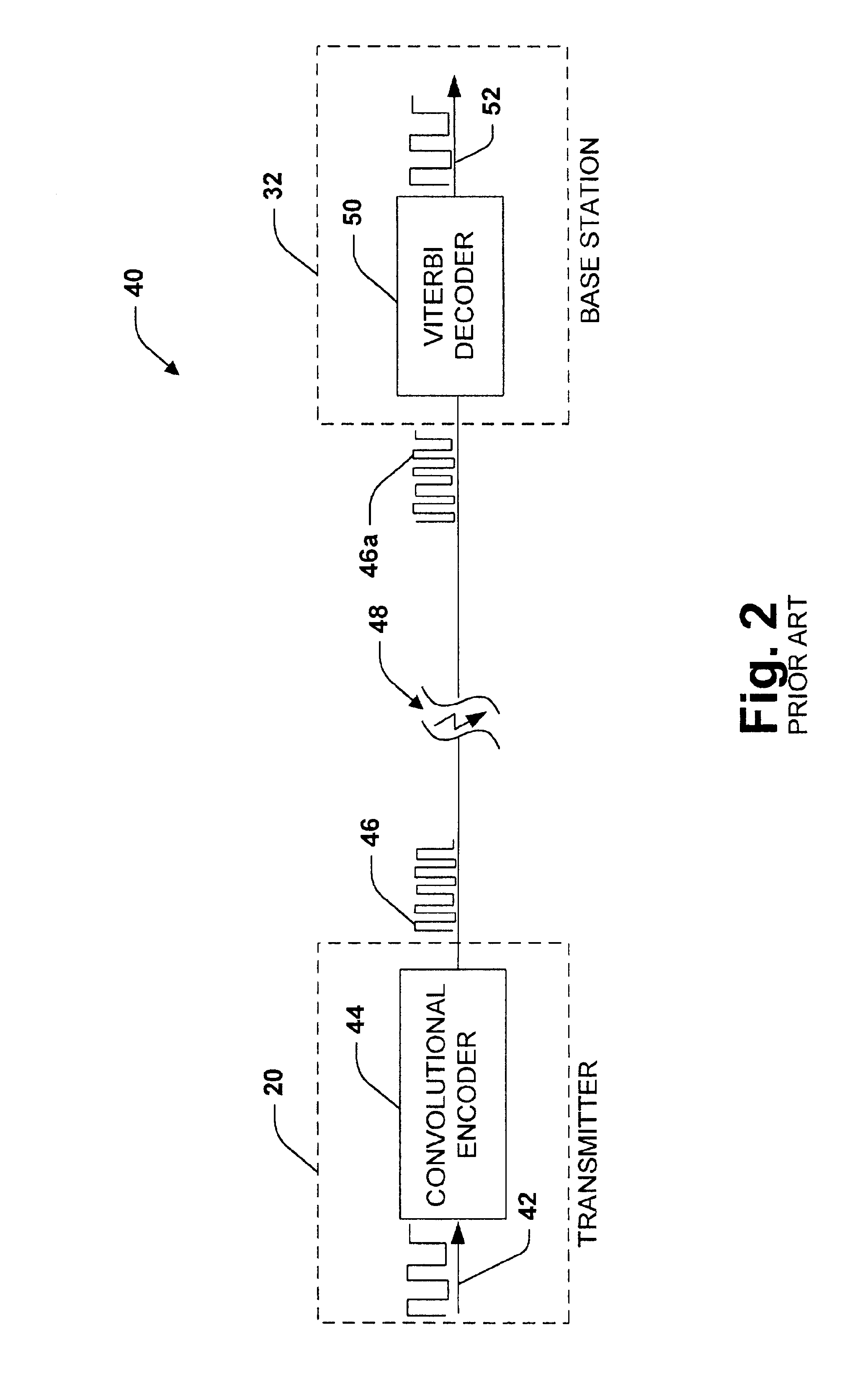Enhanced viterbi decoder for wireless applications
a wireless application and encoder technology, applied in the field of enhanced viterbi decoding systems, can solve the problems of low data throughput rate, high probability of correction of random errors occurring in transmissions, and achieve low power and/or bandwidth, high data throughput rate, and cost-effective
- Summary
- Abstract
- Description
- Claims
- Application Information
AI Technical Summary
Benefits of technology
Problems solved by technology
Method used
Image
Examples
Embodiment Construction
[0049]The present invention will now be described with reference to the drawings, wherein like reference numerals are used to refer to like elements throughout.
[0050]In accordance with the present invention, a Viterbi decoder 110 (FIG. 6) decodes a plurality of trellis stages (FIG. 5) simultaneously via a cascaded ACS 122 (FIG. 7). This substantially reduces memory access cycles, and thereby lowers power requirements and increases system throughput. During the cascaded ACS operation, a partial traceback of the trellis occurs simultaneously during the ACS operation via a unique register exchange architecture (FIG. 8). This also, lowers power requirements and increases system throughput. Additionally, variable constraint length codes, may be solved via bypass systems implemented within the cascaded ACS 122, and a plurality of user supplied code polynomials may be employed (FIG. 9) to decode various encoding structures. This provides a substantial degree of flexibility in the decoder 1...
PUM
 Login to View More
Login to View More Abstract
Description
Claims
Application Information
 Login to View More
Login to View More - R&D
- Intellectual Property
- Life Sciences
- Materials
- Tech Scout
- Unparalleled Data Quality
- Higher Quality Content
- 60% Fewer Hallucinations
Browse by: Latest US Patents, China's latest patents, Technical Efficacy Thesaurus, Application Domain, Technology Topic, Popular Technical Reports.
© 2025 PatSnap. All rights reserved.Legal|Privacy policy|Modern Slavery Act Transparency Statement|Sitemap|About US| Contact US: help@patsnap.com



